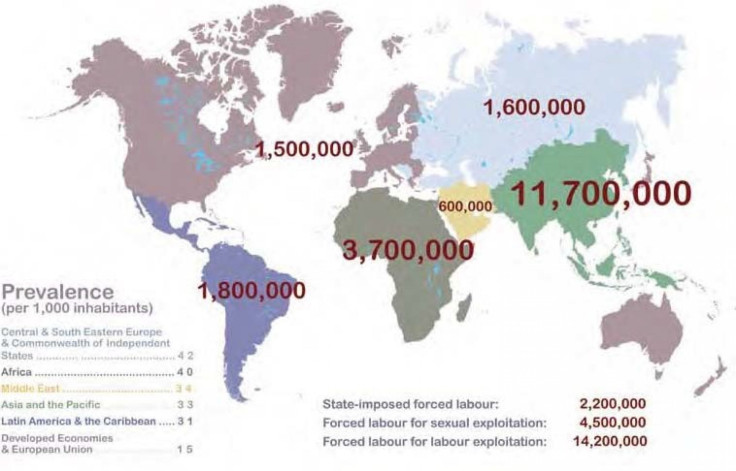Human Trafficking Enslaves 21M People Worldwide: US State Department Report

The U.S. State Department has released a new report on human trafficking around the world and estimates that about 21 million people are directly victimized by the criminal practice.
Despite the adoption of treaties and laws prohibiting slavery, the evidence nevertheless shows that many men, women, and children continue to live in modern-day slavery through the scourge of trafficking in persons, Secretary of State Hillary Clinton wrote in her introduction to the report released Tuesday.
The report examined the severity of human trafficking in each country and assigned a rating based on a four-tiered rating outlined by the 1991 Trafficking Victims Protection Act that corresponds to the level of response the country's government has made to combat human trafficking.
Among some of the countries with the worst records on combating human trafficking were North Korea, Iran, Cuba and the Democratic Republic of Congo.
The report defined the most severe forms of human trafficking as that which forces people into sexual slavery or involuntary labor.
A victim need not be physically transported from one location to another in order for the crime to
fall within these definitions, the report said.
Citing recent figures from the International Labor Organization, the report estimated that approximately 20.9 million people are victims of forced labor, which falls under the TVPA's definition of human trafficking.
The report divided forced labor into three categories: state-imposed forced labor (2.2 million people), sexual exploitation (4.5 million people) and labor exploitation (14.2 million people).
It also divided a world map into six regions (Africa, Asia and the Pacific, Central and Southeastern Europe and Commonwealth of Independent States, Developed Economies and the European Union, Latin America and the Caribbean, and Middle East)and provided general figures for forced labor estimated in each region.
The Asia and the Pacific represented the highest incidence of forced labor with 11.7 million estimated victims, though the region is also the most populous and had a lower prevalence rate, 3.3 per 1,000 people. The Central and Southeastern Europe and Commonwealth of Independent States (which includes the Russian Federation) accounted for only 1.6 million victims, but had the highest prevalence rate, 4.2 per 1,000 people.
The ILO estimated that 55 percent of forced labor victims were represented by women and girls, and an overwhelming 98 percent represented sex trafficking victims.
Ultimately, it (the report) tells us that everyone must do more, and that we do not yet have the solutions that will eradicate this crime once and for all, said Luis CdeBaca, Ambassador-at-Large Monitor and
Combat Trafficking in Persons.
The voices of survivors -- whether calling from the past or ringing out in a courtroom in 2012 -- are a sad
reminder that the struggle against modern-day slavery is a long fight still not won.
© Copyright IBTimes 2024. All rights reserved.











